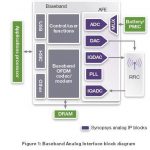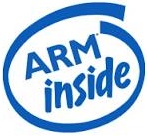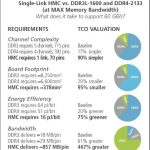I’ve written before about the basic capabilities of Sidense’s single transistor one-time programmable memory products (1T-OTP). Just to summarize, it is an anti-fuse device that works by permanently rupturing the gate oxide under the bit-cells storage transistor, something that is obviously irreversible.… Read More
Semiconductor Intellectual Property
Searching an ADC (or DAC) at 28 nm may be such a burden…
If you have ever send a Request For Quotation (RFQ) for an ASIC including processor IP core, memories, Interfaces IP like PCIe, SATA or USB and Analog function like Analog to Digital Converter (ADC) or Digital to Analog Converter (DAC), you have discovered, like I did a couple of years ago, that these Analog functions may be the key… Read More
Base Stations Move Away From Fixed Architecture DSP
Handsets moved away from fixed architecture DSP some time ago, driven by two main factors. Fixed architecture DSP consumed too much power to get good battery life in the smart-phone era, but the consumer air interface was changing fast: W-CDMA, HSPA, WiMax, 3G, LTE (which is actually a whole ‘spectrum’ of different… Read More
Ecosystem: ARM versus Intel
Ecosystem is everything when it comes to modern semiconductor design, especially if it is mobile. The fabless semiconductor industry has been all about ecosystem since the beginning and that is why we hold supercomputers in our hands today, believe it. After the invention of the transistor in 1947, and the invention of the integrated… Read More
Did you miss Cadence’s MemCon?
That’s too bad, as you have missed latest news about the Hybrid Memory Cube (presentation by Micron), Wide I/O 2 standard, as well as other standards like LPDDR4, eMMC 5.0, and LRDIMM,the good news is that you may find all these presentations on MemCon proceedings web site.
I first had a look at Richard Goering excellent blog: wideI/O… Read More
Must See SoC IP!
IP is the center of the semiconductor universe and nobody knows this better than Design and Reuse. The D&R website was launched in 1997 targeting the emerging commercial semiconductor IP market. Today, with more than 15,000 IP/SOC product descriptions updated daily, D&R is the #1 IP site matching customer requirements… Read More
OTP Memory to Build Smarter Power Management
All chips have critical power management requirements, often with multiple supply voltages. Digital power management ICs (PMICs) are commonplace to convert unregulated voltages from batteries and noisy power supplies to fully regulated accurate power to keep even the most sensitive chips performing.
Powervation is a company… Read More
Imagination Has More Stuff Than You…Imagine
Imagination seems to be well known for a couple of things. Firstly, everyone knows that it is the graphics processor used in the iPhone and the iPad and lots of other phones. And they know that Imagination acquired MIPS at the start of this year.
But what people don’t seem to really appreciate is just what a huge portfolio of IP… Read More
Mobile SoC will benefit now from M-PCIe
We have already discussed the recently released M-PCIe ECN from PCI-SIG in Semiwiki at the end of 2012, but the new “standard” (in fact an Engineering Change from PCI-SIG and MIPI Alliance) was only real on paper, at that time. The upcoming webinar from Synopsys, M-PCIe: Utilizing Low-Power PCI Express in Mobile Designs, shows … Read More
Security Needs in On-Chip Networks
I remember during my first ten years as a software developer, I used many different computers such as IBM mainframes, Apollo and Sun workstations, and VAX computers. During that time I also bought my first home computer, a Macintosh. I didn’t of course think of this at the time, but the one thing they all had in common was that they did… Read More












Quantum Computing Technologies and Challenges